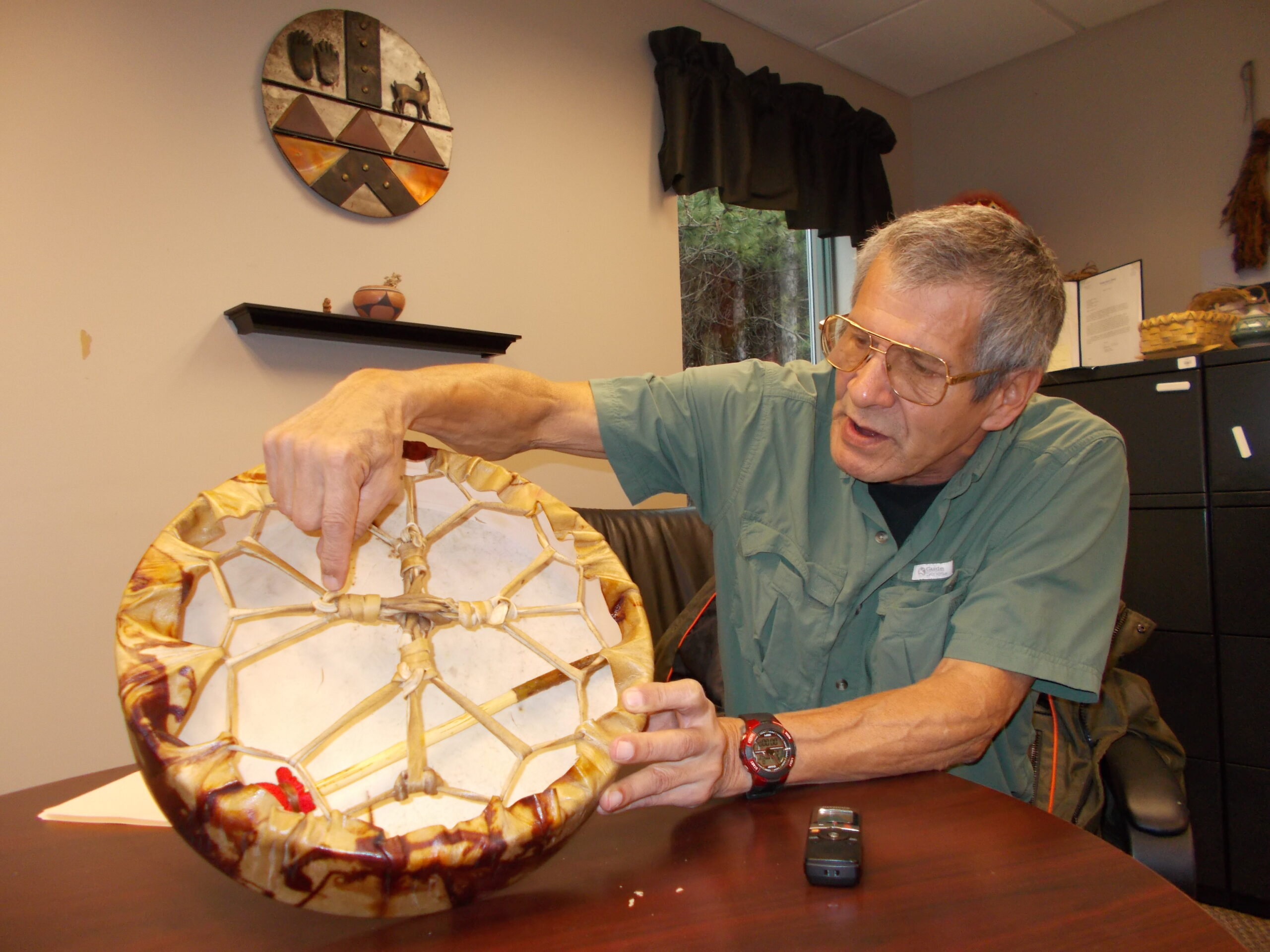
PRESQUE ISLE, Maine — The hand drum has been a cultural touchstone for numerous generations in the Aroostook Band of Micmacs and one that Robert Muise of Connor Township has dedicated himself to sharing with others.
Muise, who is originally from Houlton, learned how to make Micmac drums from tribal elder Bernard Jerome in 2009 when he moved back to Aroostook County from Haynesville. He has created and sold drums since 2010 as part of his home-based business, Drums of the Flicker. He also has contributed drums for cultural awareness displays at the Abbe Museum in Bar Harbor, the University of Southern Maine’s Atrium Art Gallery, the Gilroy Trust Museum in Bridgton, and the Smithsonian Museum in Washington, D.C.
Over the years Muise also has taught many workshops on hand drum making throughout the state and recently contributed his expertise in a YouTube video created for the Presque Isle Boys and Girls Club.
“The drum is the universal tool for healing in the Micmac community and is considered the heartbeat of Mother Nature,” Muise said. “We use drums in all our traditional ceremonies and the round shape of a drum represents unity.”
To begin making a hand drum, Muise recommends putting together 16 blocks of cedar wood to form the drum’s frame. Muise uses cedar wood because of its thickness. He then puts the pieces of wood together to form a circle and sands the edges to create a smooth surface.
For the surface of the drum, Muise uses elk hide that he orders from a company based in Washington state. Before he laces a drum together, he’ll bunch up the hide in various places to hold it steady and then use an eyedropper to place color dye on the hide, which gives each drum a unique design.
“Usually I’ll let the hide soak in water for awhile. In the past, I’ve let it soak anywhere from four hours to 24 hours, depending on how long it takes,” Muise said. “I use the leftover scraps from the elk hide to cut pieces for the lace.
Muise said that the next step is to lay the round hide flat on a table and place the drum’s frame in the middle. He uses a leather hole punch to place small holes on opposite ends of the hide and weaves the string of lace through each hole four times in order to bind the hide to the frame. Then he repeats the process by punching 15 more holes and weaving the lace around the frame of the hide, with the strings coming together in the center of the drum.
“I’ve seen other elders use 13 holes, but I’ve kind of developed my own style where I use 16 holes, with the one continuous lace going through all the holes,” Muise said.
The entire process of making a hand drum takes about one day or more, according to Muise. For him, the drums represent a personal and spiritual heritage that he is more than glad to pass onto the next generations of the Micmac community as well as to anyone who wishes to learn more about the culture.
“It’s quite rewarding when I go to events and someone says, ‘Thank you,’ for the drum that I made for them,” Muise said. “I like to know that the drums and the music make people happy.”
For detailed instructions on the process of making Native American hand drums, visit the Presque Isle Boys and Girls Club YouTube channel at https://www.youtube.com/watch?time_continue=5&v=FEjLWVGSgZE.







